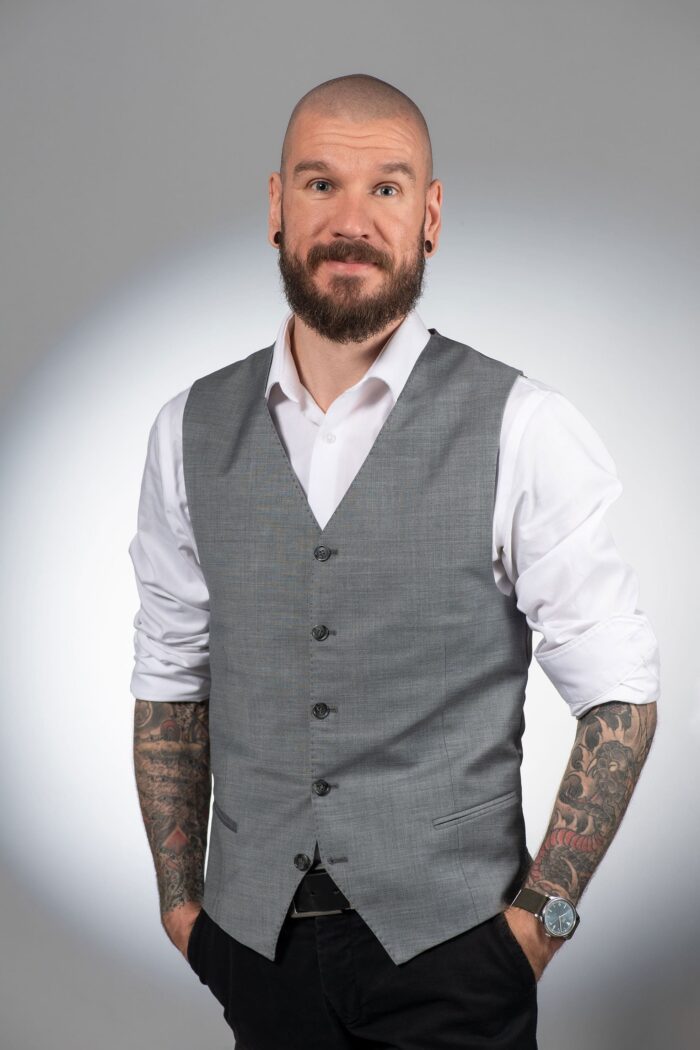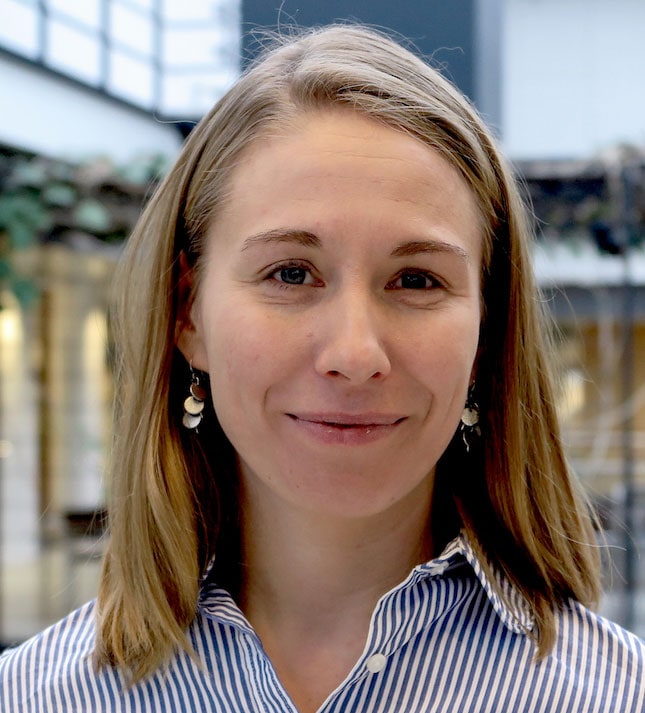Grants for Sleep and Fibroblast Research
Academy researchers funded by the Academy of Finland lead entire research groups even though they themselves have fixed-term positions. External funding ensures the continuity of their research.

In 2022, postdoctoral researcher Samu Kainulainen was building a sleep laboratory at the University of Eastern Finland when an interesting idea emerged during discussions: Perhaps the brain and body sleep at different paces?
The idea was based on two different ways of measuring sleep phases. The traditional way is to monitor the brain’s electrical activity, from which the sleep phases are defined. In sleep registrations, brain measurements are often complemented by monitoring heart rate and blood circulation. Theoretically, both should follow the same rhythm: for example, in deep sleep, there are changes in the brain, and the heart rate decreases.
The problem was that the measurements did not always match. For instance, the heart rate could change even though brain activity remained constant.
“We began to wonder if it wasn’t inconsistency after all. Maybe there are more phases of sleep than what we can measure solely based on brain electricity?”
This led to the idea of sleep as a dialogue between different body systems. If the model proves to be valid, it could open up new perspectives for the treatment and diagnosis of sleep disorders and even cardiovascular diseases.
Sleep Took Over
Kainulainen became a sleep researcher almost by accident. As the son of two doctors and holding a master’s degree in medical physics, he dreamed of a career as a hospital physicist.
He initially considered a dissertation on radiation therapy, but the department lacked funding for it. Instead, the university had received funding for sleep apnea research, and a doctoral position became available in 2018.
“I had already started a family at a young age, so unpaid doctoral work was not an option. That’s why I switched to studying sleep.”
The dissertation was completed quickly in just two years, and in 2021 Kainulainen was already responsible for establishing the university’s new Smart Sleep laboratory. At the same time, he began supervising doctoral theses and leading his own research.
The laboratory was completed in 2022. This fall, the research took a step forward when Kainulainen was awarded an Academy Researcher position as well as a four-year grant of 568,000 euros from the Jane and Aatos Erkko Foundation.
“The Academy Researcher position pays my salary, but the grant funds the salary of a research nurse, a doctoral position, and new investments in the laboratory,” says Kainulainen. Previously, the laboratory could study two people simultaneously; now, the number has doubled.

Photo: Samu Kainulainen
Interpreting the Support Structures of Cancer
The Jane and Aatos Erkko Foundation also awarded a research grant to Academy Researcher Saara Ollila at the University of Helsinki. Ollila, a doctor of genetics, studies fibroblasts, a type of supportive cell in gastrointestinal cancers.
“Although fibroblasts are not actual cancer cells, they differ from normal fibroblasts and affect the development of tumors,” explains Ollila.
“We do not yet fully understand the mechanism behind this, but in various intestinal tumors, fibroblasts seem to change in the same way.”
This creates an opportunity to target drug development at tumor fibroblasts and thus influence the development of tumors. One possible mechanism is the inflammatory protein interleukin 11, whose blocking appears to prevent tumor development, at least in Peutz-Jeghers syndrome, which Ollila has been researching.

Photo: Saara Ollila
Ollila has led her own research group with Academy Researcher funding since 2018. Currently, the group includes two doctoral students, one of whom defended their dissertation last spring.
However, change is in the air. Ollila was appointed as a university lecturer in genetics at the University of Helsinki’s Faculty of Biological and Environmental Sciences, meaning she and her research group are moving to a new campus.
The lecturer position does not fund the group, however. To support the group, she and her colleague Jaakko Mattila received a joint four-year grant of 904,000 euros from the Jane and Aatos Erkko Foundation.
Funding Brings Continuity
Kainulainen and Ollila are at different ends of their five-year periods as Academy Researchers – Kainulainen is just starting his, while Ollila is concluding hers.
Still, additional funding is crucial for both to continue their research.
“For me, the funding came at just the right time,” says Ollila.
“The lecturer position pays my salary and provides research infrastructure, but the group’s funding must be sought externally. Without the grant, my research group could not have continued.”
Kainulainen has a similar experience.
“Academic work is a tough game – you have a job as long as you secure funding. Although I can handle the uncertainty personally, the responsibility for the future of other members of the research group weighs heavily – if we do not find funding, their jobs are at risk,” Kainulainen notes.
Continuity also allows the research to progress. Ollila’s research has made the most progress with Peutz-Jeghers syndrome, which is a rare disease. Determining to what extent the results can be generalized to other inflammation-based intestinal diseases and intestinal cancers is still ongoing.
“In academic work, the results are valuable in themselves,” Kainulainen reminds. “I am interested in finding answers, not in thinking about how to make money with them. That’s someone else’s problem.”
Back to Driving a Forklift?
Both researchers are also united by family life. The 32-year-old Kainulainen became a father at a young age and, after his divorce, has been a co-parent with alternating weeks.
“This limits the positions I can take – for example, a postdoc abroad was not an option for me because I wanted to be present in my children’s lives.”
Ollila had her third son during her period as an Academy Researcher. She has previously been abroad for shorter periods but admits that a longer stay abroad would be challenging with small children. Even days can’t be extended indefinitely – the daycare closes at five.
Uncertainty is also familiar. Ollila’s university lecturer position is the 46-year-old’s first permanent employment.
“The next step on the career ladder would be to get an assistant professorship and a tenure track position, but it’s not just about one’s own competence – it also depends on what areas the university deems necessary to fill assistant professor positions.”
However, she is not worried about her own future.
“I see it as always having the option to go back to driving a forklift if there are no jobs in academia. But it would be a shame for the research group and the research,” says Kainulainen.